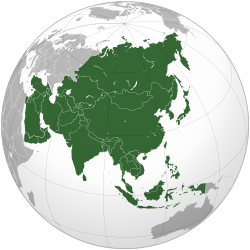
This list includes all 31 confirmed impact structures in Asia and Russia as listed in the Earth Impact Database. These features were caused by the collision of large meteorites or comets with the Earth. For eroded or buried craters, the stated diameter typically refers to an estimate of original rim diameter, and may not correspond to present surface features.
Contents
For additional geographic grouping, non-Siberian Russian impact structures include the region's federal district.



